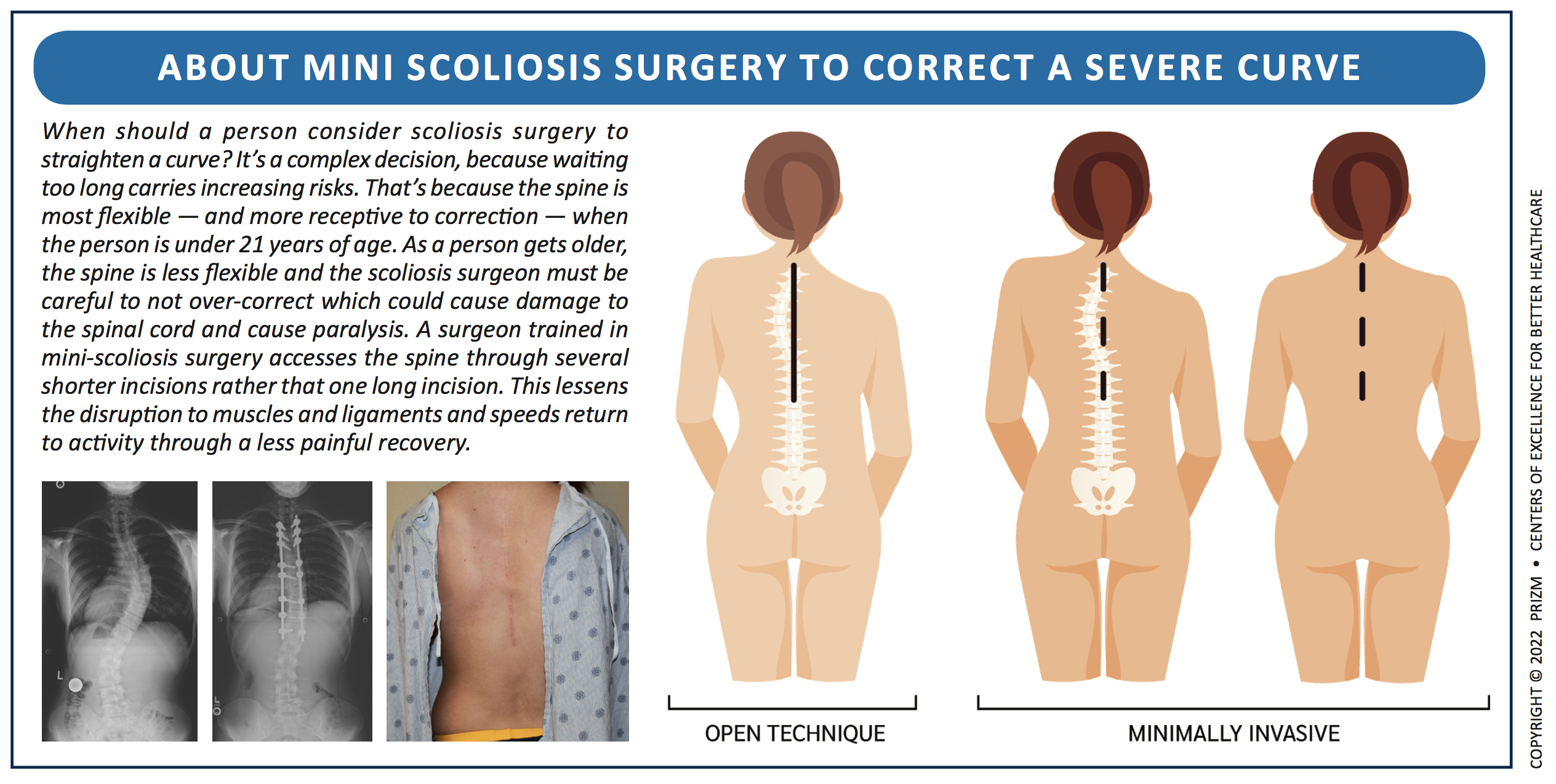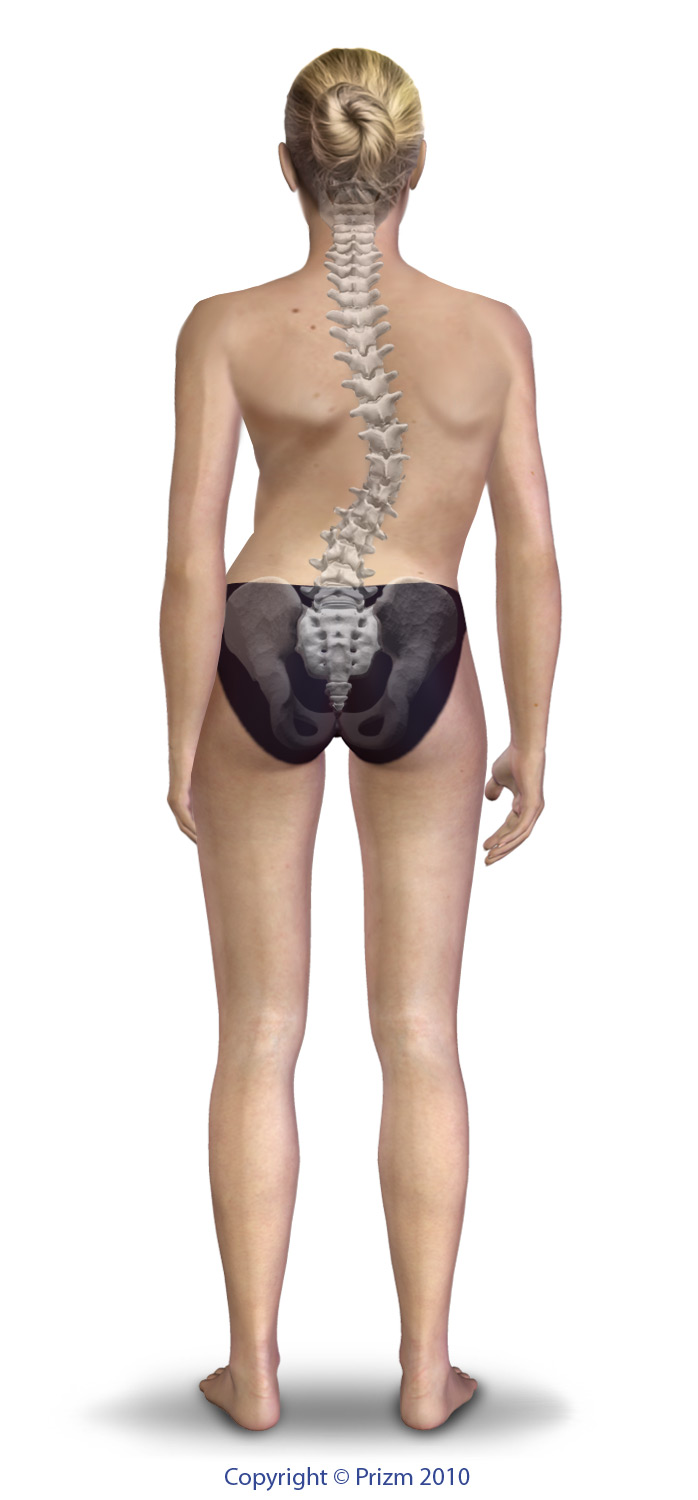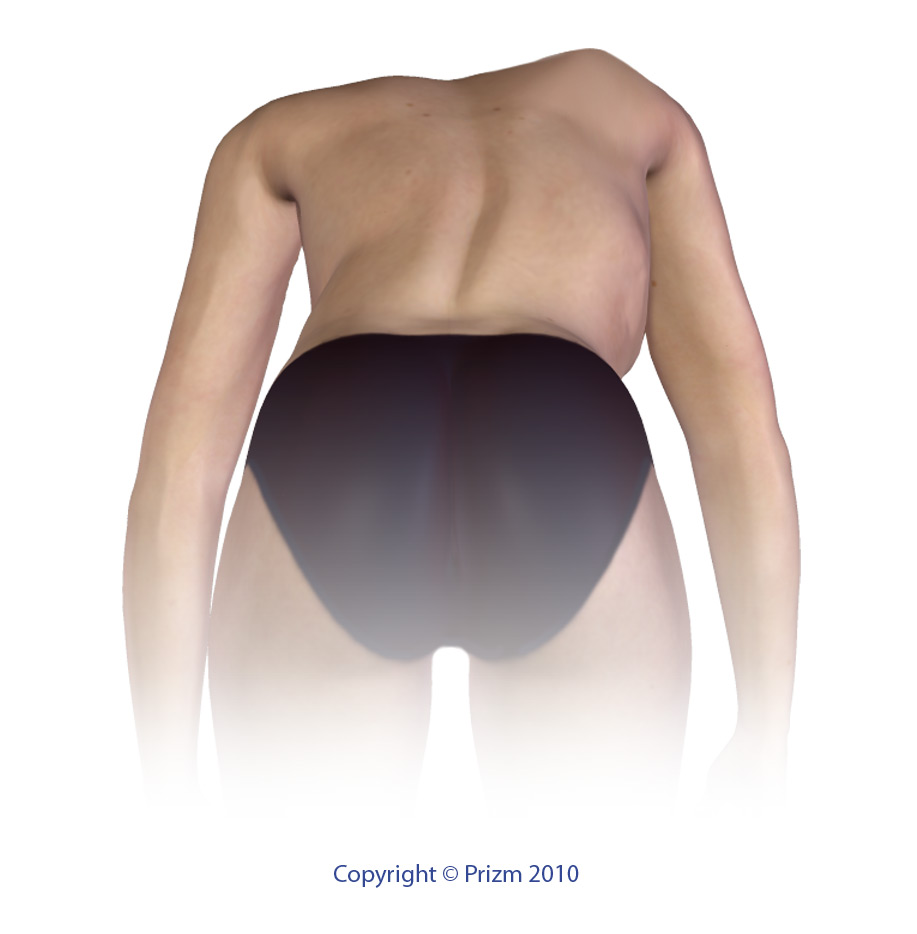Scoliosis Surgery
Overview
For adults, the treatment for adult scoliosis is an emphasis on function and movement.
 Bracing is used only as a temporary pain relief measure; it cannot correct the curve in an adult. Treatment focuses on medications and physical therapy. If other problems exist that are caused by the scoliosis (sacroiliac dysfunction, flatback, spinal stenosis, nerve root pinching), there are some non-surgical treatments.
Bracing is used only as a temporary pain relief measure; it cannot correct the curve in an adult. Treatment focuses on medications and physical therapy. If other problems exist that are caused by the scoliosis (sacroiliac dysfunction, flatback, spinal stenosis, nerve root pinching), there are some non-surgical treatments.
Surgery may be required in order to correct the spinal curve. Surgery is usually only recommended for large, progressive curves or in those patients who have nerve pain that steadily worsens. These surgeries can be extremely complicated, and a person should invest a great deal of time in selecting a spine surgeon who subspecializes in using the most current corrective techniques using the most advanced scoliosis instrumentation.
As with any spine surgery, finding a doctor with experience in this specific type of surgery is key. As with any disease, the sooner the problem is discovered, the more treatment options there are available to arrest the progress of the condition.

When surgery is necessary, the concern with adults is that the older the patient, the less the flexible the spine is for correction, and the more risk for spinal cord damage during correction. In this case, waiting years to deal with progressing scoliotic curves can be a disadvantage.
Surgery consists of using metal rods, screws or wires to de-rotate the curve. An incision is made in the back so the surgeon can access the vertebrae and install the necessary instrumentation, rods, hooks and screws.
Scoliosis surgery is based on a two-rod instrumentation system with hooks that attach to each vertebral level, to de-rotate and straighten the abnormal curve.
Over the last five years, new minimally invasive scoliosis surgery has emerged that enables a scoliosis surgeon to make several shorter incisions to access and straighten the spine, rather than one long incision. This enables the patient to have a faster and less painful recovery.
The good news about scoliosis is that the vast majority of people diagnosed with some degree of scoliosis will often live normal, active and healthy lives.
Mini Scoliosis Surgery
With scoliosis surgery, an incision is made in the back so the surgeon can access the vertebrae and install the necessary instrumentation, rods, hooks and screws.
Traditonal scoliosis surgery can involve a long 12 to 24-inch incision to enable the surgeon to access the spine and correct the curve.
While traditional surgery with a 12-inch incision is effective, the recovery period can be lengthy and painful because of the long incision and disruption to muscles and ligaments.
A new advanced treatment option that has emerged over the last 10 years is “mini scoliosis surgery” which is done in only a handful of scoliosis centers in the United States.
Dr. Matthew Geck and Dr. Rory Mayer at Texas Spine & Scoliosis Center are both proficient in this mini scoliosis surgery technique.
With mini scoliosis surgery, Dr. Geck and Dr. Mayer are able to use special instruments and work through three smaller incisions to straighten the spine with far less muscle and tissue disruption.

- The benefit of mini scoliosis surgery to the patient is significant:
- The shorter incisions involve less blood loss and no need for outside blood, which lessens risks.
- The shorter incisions cause less disruption to muscles and tissues so the patient has a less painful and much quicker recovery.
- There is less risk of complications and less time in the hospital.
Using a few small incisions instead of a single long one, and also using muscle sparing surgical approaches, many scoliosis curves can now be reconstructed with similar results to traditional open approaches. Compared to an open approach, this minimally invasive approach has less scarring, less muscle dissection, less chance of tissue complications and less blood loss. Other advantages include shorter hospital stay, less pain, and because of the muscle sparing approach, faster return to function.
